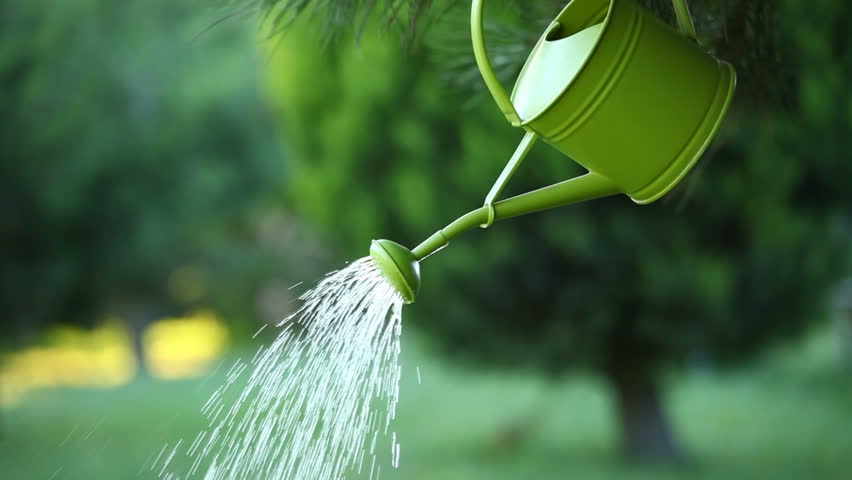Responsible Watering

YES, you can enjoy a garden in any year or place where water conservation is a concern or necessity, as it almost always is here in the Southwest. By following some simple responsible watering guidelines, you’ll enjoy your beautiful plants and feel good about conserving precious water in the process.
General Responsible Watering Tips
-
- Landscapes cannot only survive, but thrive using less water. One key factor to this is the soil. Mix compost, peat moss, Back to Earth, or other amendments in to not only improve soil by adding organic matter and loosening up our heavy clays, but also to help add water retaining material. Back to Earth is composed of composted cotton bolls and it’s the best thing we’ve found to break up the heavy clay soils here.
- Xeriscape isn’t a type of specialty garden, but rather a system of principles that all work together to conserve water in the landscape. Many annuals and perennials that you wouldn’t necessarily expect to be classified as “xeric” appear on Colorado’s Xeric List. Some of these include petunias, alyssum, lantana, gazanias, daylilies, rudbeckias, lavender and more.
- Use the technology that is available to you in order to garden successfully and prudently. Install timers on hoses and irrigation. Use drip systems, soaker hoses and more efficient ways to water rather than broadcast sprinklers. We highly recommend the use of Soil Moist as an additive in your pots, baskets and even beds to hold water rather than let it run off. Soil Moist is a polymer that plumps up when wet, then releases that moisture as your plant dries out throughout the day. We use it in all of our containers and hanging baskets.
- Put down weed barrier, then cut holes in that and plant, then mulch on top. The weed barrier and mulch are excellent ways to conserve water and keep it from evaporating.
- No water means dead grass but low water means dormant grass. Kentucky blue grass is one of the most drought resistant plants available. It can go dormant and turn brown during the summer months, only to return to green once the rains begin.
- Fertilizer is more important than ever in order for plants to establish good root systems.
Outdoor Water Conservation Tips
-
- Shut down fountains, waterfalls, or anything else that sprays water into the air.
- Mulch shrubs, trees and flower beds with a good quality mulch to keep down weeds, and retain water. Apply mulch 2-4 inches deep.
- Plant drought savvy plants in your yard.
- Raise the lawn mower deck to at least 3″. A higher cut lawn encourages grass roots to grow deeper and will hold the soil moisture better.
- Use soaker hose or drip irrigation around trees and shrubs.
- Water at night from 10pm – 6am or at least avoid watering between 10am -6pm. Watering in the morning will see your plants through challenging summer temperatures and conditions. Do not water during the heat of the day or when the wind is blowing. Even in Denver, you can water on any day using drip or hand watering. Watering at night is more of a recovery effort and repeated stress will cause the plant to deteriorate.
- Use timers to help make the best use of your water if you’re using a sprinkler. Not sure how much water they’re putting out? Put a saucer or small container like a tuna fish can in the area to measure.
- Do not waste water by allowing it to pool in gutters, on sidewalks, or in driveways.
- Do not water on high wind days or while it’s raining.
Responsible Watering Tips for Flower and Vegetable Gardens
A healthy flower or vegetable garden can use less water than grassy areas. Adjust your watering for the plant’s needs.
-
- Select and plant flowers by their specific sunlight and water needs. Many low use flowers are available. See the list below for Colorado’s recommended low water annuals and perennials.
- Improve the soil as recommended using mulch, compost or peat moss. This helps retain the water you do give the plants.
- Insert a 6″ screwdriver into the soil before watering to determine if the flowers need water before you begin. If it can be easily inserted, you probably don’t need to water.
- Use Soil Moist in beds, baskets and containers to absorb water and then release it when needed later in the day.
- Mulch is more important than ever. Not only does it help to retain moisture, it also makes for a nice finish to your beds or containers and also controls weeds.
- Vegetables don’t need more water, but they need to be watered deeply because they have deeper roots.
Tips for Responsible Watering of Trees and Shrubs
-
- Amend soil with Back to Earth, compost or peat moss to retain moisture and improve soil.
- When watering trees and shrubs, apply within the drip line of the plant in order to catch all of the roots. Use a drip system when possible.
- Water deeply and slowly and water well enough so that the soil is wet to a depth of 12″.
- A general rule of thumb is to apply 10 gallons of water for each inch of a tree’s diameter each week. Larger trees with already established root systems will need less water.
- Mulch trees and shrubs well to retain moisture.
- Stressed trees are more vulnerable to disease and pests so watering to keep your trees healthy is important.
Thanks to Denver Water Company, Montezuma Valley Irrigation, Greenco.org, Colorado Nursery and Greenhouse Association, and Krystal Keistler-Hawley at Echter’s in Denver for sharing their information.
